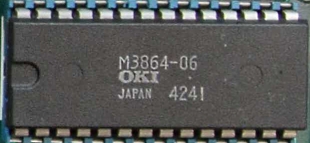|
 |
The Memotech MTX Series
|
 |
MTX Series ROM
Firmware

Disclaimer
These pages were written as I attempted to gain a better
understanding of the ROMs used in
the MTX series of computers
The information here will likely evolve as I learn more, but
it is not guaranteed to be
accurate and may contain glaring errors, obvious to anyone
who knows about these things - if you spot any, please let
me know.
BASIC Editor Input Scanning
When I was trying to find a
VRAM
fault with my MTX512S2, I saw some strange effects that
I could not understand at the time. The "Ready" prompt
was
displaying "Peady", but it
wasn't just a character display problem as typing "R"
at the keyboard also resulted in a "P"
being displayed that was interpreted by BASIC as a "P"
rather than an "R".
As the MTX schematic shows, the VRAMs are not
directly connected to the Z80 data bus - data
transfer is between the VDP and the VRAMs, so I
could not understand how display corruption could
affect the BASIC interpreter. Some time later,
when we were trying to increase the speed of
MTXPlus+,
we saw similar problems when over-clocking the VDP. As the
system speed increased, we saw increasing amounts of display
corruption. When the corruption occurred in the edit region
under MTX BASIC, the BASIC ROM interpreted the data
presented on screen, rather than the keystrokes that had
been entered. I had previously assumed (without actually
looking at the ROM) that user input would have been read
into a keystroke buffer before being passed to the BASIC
interpreter, as it turns out, this is way off the mark. When
Martin and I were discussing some of the screen problems
with Tony, Tony cleared up my misunderstanding of the key
stroke processing logic. Unsurprisingly, the MTX BASIC
editor uses VDP text mode when the user is editing programs
or displaying text output. When entering text in the edit
area, if the cursor is moved back over characters already
entered at the keyboard, the highlighted character flashes
in reverse video. Since text mode in the TMS9918/29 VDP does
not have a colour table, it is not possible to simply invert
the paper and ink colours for one char, so a "work-around"
was required to achieve this effect. The cursor routines
in the ROM read the VRAM to find out what character is under
the cursor and writes the inverted character (char no. +
128) back when necessary. It is the displayed character that
is fed to the BASIC interpreter - not necessarily the key
strokes that have been entered.
Credits
Some information provided by Tony Brewer
|